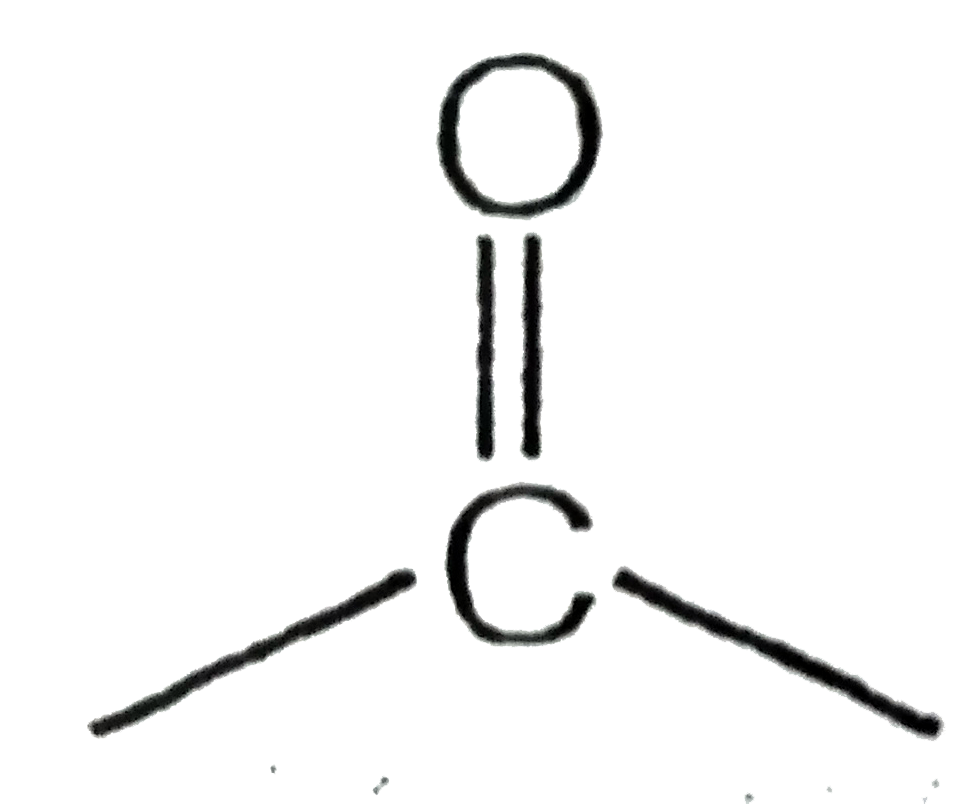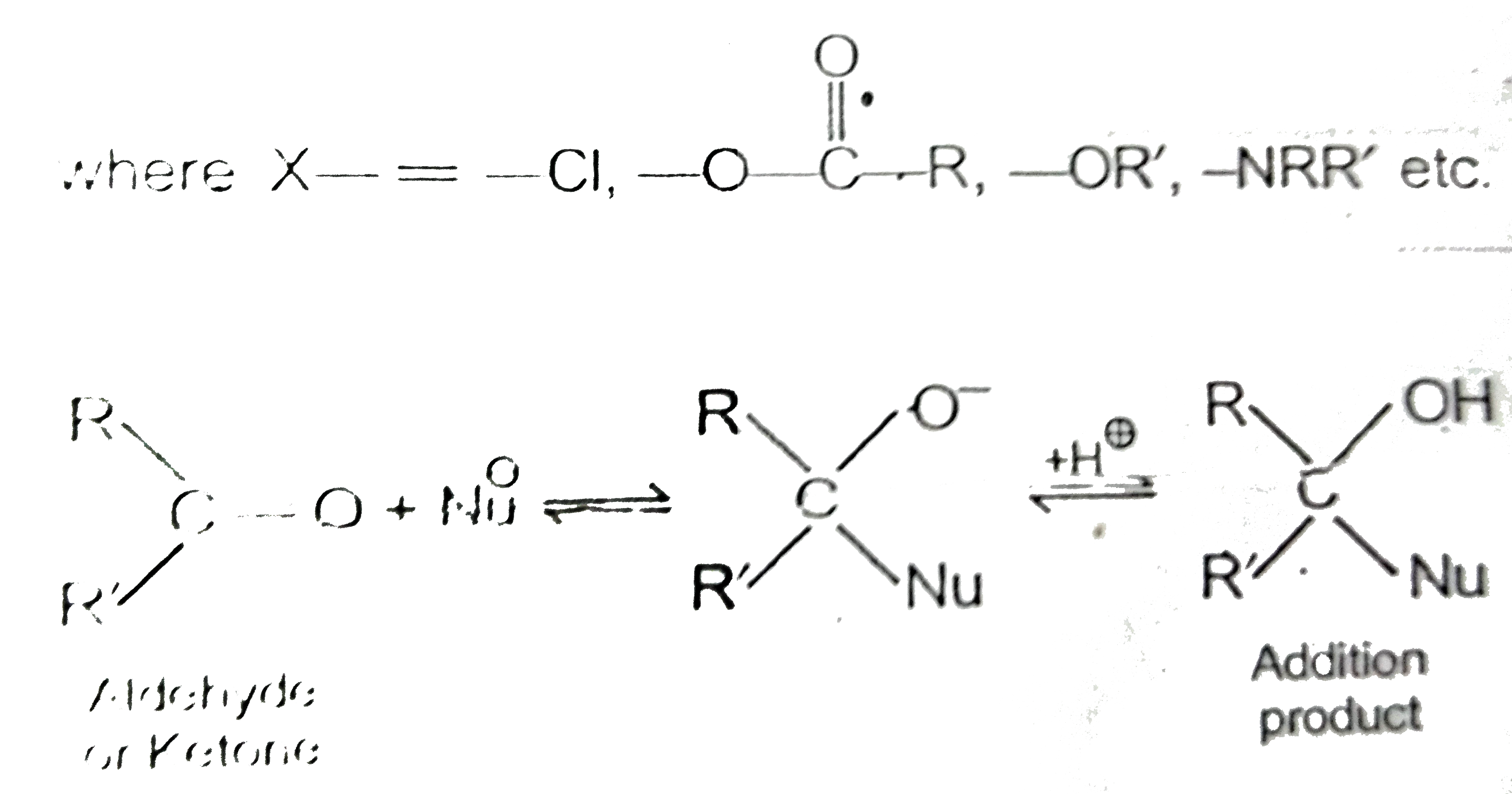Aldehydes and ketones give addition reaction with
Hydrazine
Phenyl hydrazine
Semicarbazide
Hydrogen cyanide
The correct Answer is:D
To solve the question regarding which substances give addition reactions with aldehydes and ketones, we will analyze each option provided.
Step 1: Identify the nature of aldehydes and ketones
Aldehydes and ketones contain a carbonyl group (C=O), which is polar due to the difference in electronegativity between carbon and oxygen. This polarity makes the carbon atom electrophilic and susceptible to nucleophilic attack.
Hint: Aldehydes and ketones have a carbonyl group that makes them reactive towards nucleophiles.
Step 2: Analyze the options
1. Hydrogen (H2): This is a diatomic molecule and does not act as a nucleophile. It does not participate in addition reactions with aldehydes or ketones.
Hint: Consider whether the substance can donate electrons or act as a nucleophile.
2. Phenylhydrazine (C6H5NHNH2): This compound can react with carbonyl compounds to form hydrazones through a condensation reaction, which involves both addition and elimination (removal of water). However, it is not a straightforward addition reaction.
Hint: Look for compounds that can add directly to the carbonyl carbon without elimination.
3. Semi-carbazide (H2N-NH-C(O)NH2): Similar to phenylhydrazine, semi-carbazide reacts with carbonyl compounds to form semi-carbazones through a condensation reaction, which also involves elimination.
Hint: Again, focus on whether the reaction is purely an addition reaction.
4. Hydrogen cyanide (HCN): This is a well-known nucleophile. When HCN reacts with aldehydes or ketones, it adds to the carbonyl carbon, forming a cyanohydrin. This is a classic example of a nucleophilic addition reaction.
Hint: Identify if the substance can add to the carbonyl carbon without elimination.
Step 3: Conclusion
Among the given options, only hydrogen cyanide (HCN) is capable of undergoing a straightforward addition reaction with aldehydes and ketones to form cyanohydrins.
Thus, the correct answer is Hydrogen cyanide (HCN).
Final Answer
Hydrogen cyanide (HCN) gives addition reactions with aldehydes and ketones.
Aldehydes and ketones contain a carbonyl group (C=O), which is polar due to the difference in electronegativity between carbon and oxygen. This polarity makes the carbon atom electrophilic and susceptible to nucleophilic attack.
1. Hydrogen (H2): This is a diatomic molecule and does not act as a nucleophile. It does not participate in addition reactions with aldehydes or ketones.
Hint: Consider whether the substance can donate electrons or act as a nucleophile.
Among the given options, only hydrogen cyanide (HCN) is capable of undergoing a straightforward addition reaction with aldehydes and ketones to form cyanohydrins.
Hydrogen cyanide (HCN) gives addition reactions with aldehydes and ketones.
Topper's Solved these Questions
- ALDEHYDES, KETONES AND CARBOXYLIC ACIDBOOK - A2ZCHAPTER - ALDEHYDES, KETONES AND CARBOXYLIC ACIDEXERCISE - Oxidation And Reduction Of Carbonyl Compounds
54 Videos
- ALDEHYDES, KETONES AND CARBOXYLIC ACIDBOOK - A2ZCHAPTER - ALDEHYDES, KETONES AND CARBOXYLIC ACIDEXERCISE - Cannizaro'S Reaction
15 Videos
- ALCOHOLS, PHENOLS AND ETHERSBOOK - A2ZCHAPTER - ALCOHOLS, PHENOLS AND ETHERSEXERCISE - Section D - Chapter End Test
30 Videos
- BIOMOLECULESBOOK - A2ZCHAPTER - BIOMOLECULESEXERCISE - Section D - Chapter End Test
30 Videos
Similar Questions
Aldehyde, ketone, acid and acid derivatives contain >C=O group. Aldehyde and ketones gives nucleop addition reactions where as acid and acid derivatives gives nucleophilic addition followed by ellmination reaction Nucleophilic addition reactions followed by ellimination of acid derivatives is known as acyl substitution reacts This subsitution reaction takes places by formation of tertrahedral intermediate. For the given reaction
_E01_571_Q01.png)
which of these is correct?
View SolutionAldehydes and ketones are
View Solution
Knowledge Check
Aldehydes and ketones give addition reactions with
AHCNBNaHSO3CRMgXDROHAldehydes and ketones donot give addition reaction with
AHCNBNaHSO3CBothDHCl(aq)Both carbonyl compounds and acid derivatives though they contain
 grouping yet the reactions given by them are entirely different.
grouping yet the reactions given by them are entirely different.
As Aldehydes and Ketones give addition product with a nucleophile, while carboxylic acid derivatives give nucleophilic acyl substitution through addition/elimination mechanism.

Where X−=−Cl−O−O∣∣C−R−OR,−NR(R) etc.

Why aldeydes and Ketones give nucleophilic addition reaction while acid derivatives prefer nucleophilic acyl substititution reaction?ACarbonyl carbon of aldehyde and Ketones are more electron deficient than acid derivativesBCarbonyl carbon of acid derivatives are more electron deficient.CAcid derivatives also give addition reactionDIn acid derivatives, acyl carbon is connected with a good leaving group
Aldehydes and ketone are
View SolutionAldehyde and ketones are
View SolutionIn aldehydes and ketones
View SolutionAldehyde, ketone, acid and acid derivatives contain >C=O group. Aldehyde and ketones gives nucleop addition reactions where as acid and acid derivatives gives nucleophilic addition followed by ellmination reaction Nucleophilic addition reactions followed by ellimination of acid derivatives is known as acyl substitution reacts This subsitution reaction takes places by formation of tertrahedral intermediate.
Which of the following compounds has very poor leaving group?
View SolutionAldehyde, ketone, acid and acid derivatives contain >C=O group. Aldehyde and ketones gives nucleop addition reactions where as acid and acid derivatives gives nucleophilic addition followed by ellmination reaction Nucleophilic addition reactions followed by ellimination of acid derivatives is known as acyl substitution reacts This subsitution reaction takes places by formation of tertrahedral intermediate.
Which one of the following is least reactive compound for nucleophilic acyl substitution.
View Solution
